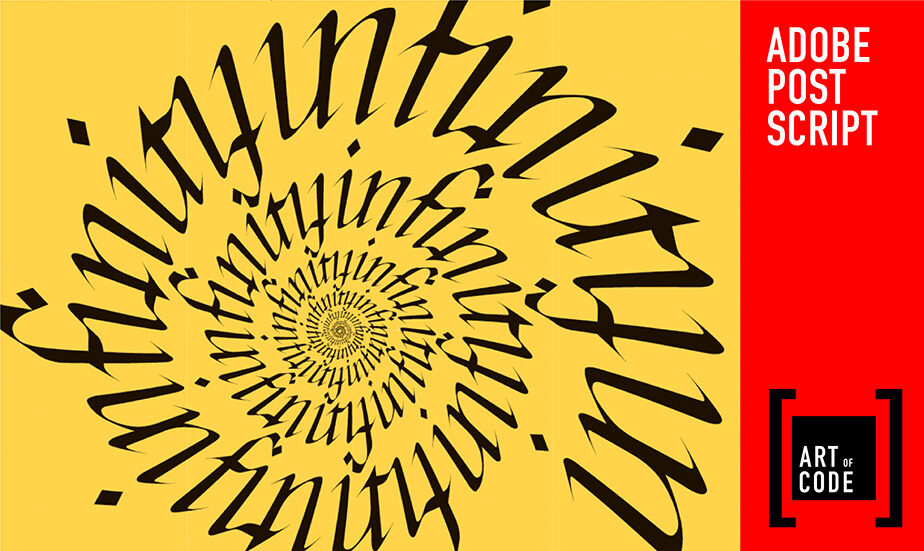PostScript (PS) is a page description language in the electronic publishing and desktop publishing realm. It is a dynamically typed, concatenative programming language. It was created at Adobe Systems by John Warnock, Charles Geschke, Doug Brotz, Ed Taft and Bill Paxton from 1982 to 1984.
PostScript is the precursor to PDF, and at the time it was revolutionary. Coming out of Xerox’s PARC, the idea was to create device- and resolution-independent documents where all the characters, symbols, and graphics are described by their shapes instead of bitmaps.
In March 1985, the Apple LaserWriter was the first printer to ship with PostScript, sparking the desktop publishing (DTP) revolution in the mid-1980s. The combination of technical merits and widespread availability made PostScript a language of choice for graphical output for printing applications. For a time an interpreter (sometimes referred to as a RIP for Raster Image Processor) for the PostScript language was a common component of laser printers, into the 1990s. PostScript went beyond the typical printer control language and was a complete programming language of its own (you can for example use it to calculate Mandelbrot set if you wish). However, the cost of implementation was high.
After 40 Years, Adobe Releases PostScript Source V0.10 For Posterity. The Computer History Museum is excited to publicly release, for the first time, the source code for the breakthrough printing technology, PostScript. Celebrating their 40th anniversary, Adobe released the source code of PostScript v0.10 to the Computer History Museum. It’s no exaggeration to say that this ended up revolutionizing the print industry, and it makes sense in the CHM’s collection. If you think it’s fun to see the original codebase where it all started, go to Computer History Museum AOC Postscript download page (you need to accept the terms and conditions of the CHM Software License agreement to download the Adobe PostScript source code file).
You will not learn big trade secrets or might won’t be able to use the code to make something useful as it is. It is the first version and unfortunately it won’t compile as it is published now with modern compilers. I you like to mess around with PostScript, downloading a modern open-source interpreter like GhostScript probably makes a lot more sense.
PostScript: A Digital Printing Press article tells about the PostScript story:
“The story of PostScript has many different facets. It is a story about profound changes in human literacy as well as a story of trade secrets within source code. It is a story about the importance of teams, and of geometry. And it is a story of the motivations and educations of engineer-entrepreneurs.”

14 Comments
Tomi Engdahl says:
Explore Pioneering Software at the Computer History Museum Its director of curation on preserving Smalltalk and other source codes
https://spectrum.ieee.org/source-code-computer-history-museum
mapquest driving directions says:
It not only served as a printer control language but also as a complete and powerful programming language in its own right.
io games says:
This is a very nice and informative piece that tells you everything you need to know and has a big effect on new technology
slope says:
Thank you for providing such useful information. I’ve been having trouble coming up with many questions about this topic. I’ll stick with you!
Max says:
Thanks for sharing the script!
shell shockers says:
Thanks a lot, this will help me do better in college and write better
Shellshockers1. says:
This site is great for people who want to keep learning and find new and interesting things to know shell shockers
Jessica Collins says:
This post beautifully encapsulates the multifaceted nature of PostScript and its impact on technology and society. The mention of “profound changes in human literacy” highlights how PostScript revolutionized the way we think about digital communication and print. papa’s games
mapquest says:
Even as technology has evolved, MapQuest has managed to retain the spirit of the past, providing navigation tools that stand the test of time
James W. Gudino says:
I remember tinkering with PostScript code in college – it was fascinating how you could create complex graphics with just programming commands! The language’s mathematical precision reminds me of creating custom levels in Geometry Dash, where every spike and platform placement requires exact positioning and timing calculations. While this historical release might not compile today, it’s incredible to see the foundation code that revolutionized desktop publishing forever.
Lenard C. Hankerson says:
I remember wrestling with PostScript files in the early 2000s when working at a print shop. Those .ps files were both magical and frustrating – you could create incredibly precise graphics, but when something went wrong, debugging was a nightmare. It’s fascinating that Adobe released the original source code after 40 years. PostScript truly was ahead of its time, essentially treating documents as programs rather than static images. Geometry Dash
Uno Online says:
What are your favorite Uno strategies? What’s the most memorable Uno moment you’ve ever experienced? Share your thoughts and experiences in the comments below! We’d love to hear from you. Also, let us know if you have tried Uno Online and what you think! “””
Chilasmio says:
Wow, that’s a fascinating look back at PostScript! It’s amazing to think about its impact on desktop publishing and how it paved the way for PDFs. The idea of device-independent documents was truly revolutionary. It almost makes you want to annihilate the world, like in Solar Smash, but on a smaller, code-based scale! I might check out GhostScript to tinker with it. Thanks for sharing this!
elongrime says:
Your article is great! Thank you for taking the time and effort to share this valuable knowledge. I have learned a lot of new things and will apply them in practice. I hope you will continue to write more good articles like this smashy road free.